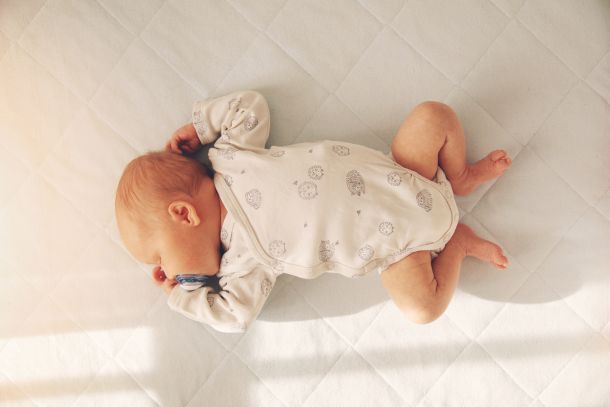Sudden Infant Death Syndrome

Safe sleep practices - such as putting your baby to sleep on his back and ensuring a safe sleep environment - have dramatically reduced the incidence of Sudden Infant Death Syndrome (SIDS), which can be defined as the sudden, unexpected death of an apparently healthy infant. It peaks at 2-4 months of age and is relatively rare after the baby turns one. It is a real fear for parents with infants, and a source of great anxiety. As of yet, there is no definitive cause for SIDS and while there is nothing more agonizing than losing a child, whether it’s during pregnancy or after delivery, it’s important to remember that no one is to blame for SIDS. It cannot be predicted and there is no definitive way to prevent it. Fortunately, research shows that there are a number of things you can do to reduce your baby’s risk of SIDS.
Practice Safe Sleep and Reduce the Risk
According to the Canadian Foundation for the Study of Infant Deaths (CFSID) there are several things parents can do to reduce the risk of SIDS and infant sleep accidents:
- Always put baby to sleep on his back, at night and during nap times. This single act has had a significant impact on the incidence of SIDS.
- The safest place for an infant to sleep is in a crib, cradle or bassinet that meets current Canadian regualtions - NOT on a sofa, an adult bed, an air mattress, futon or pillow.
- Remove any quilted or loose bedding, sleep positioners, stuffed toys or padding from your baby’s crib. Consider using a sleep sack or wearable blanket. If you use a blanket, place baby with his feet at the foot of the crib, tuck the blanket securely around the end and sides of mattress and pull the blanket up only to baby's chest.
- Ensure you have a firm mattress that fits tightly in the crib.
- Share your room, not your bed - place your baby to sleep in a crib next to your bed for the first six months.
- Prevent your baby from getting overheated; keep bedding and blankets lightweight and your room cool (about 20°C to 22°C).
- Strollers, swings, bouncers, car seats and playpens are not intended for safe sleep.
- Breastfeed - research has proven it offers some protection against SIDS
- Do not smoke during pregnancy. Do not smoke around your baby – or let anyone else smoke around your baby.
- Pacifiers appear to provide a protective effect for SIDS.
Commonly asked questions
Q: My baby spits up after every feed. Is it safe to place him on his back or will he choke if he spits up?
A: When an infant is placed on their back, the trachea is above the oesophagus. Stomach contents must work against gravity to get caught in the trachea. However, when an infant is placed on their stomach, regurgitated contents tend to pool near the opening to the trachea, increasing the likelihood of choking.
Q: If I put my baby to sleep in a crib on her back with no blankets, will she not be cold?
A: No. The temperature of the room should be comfortable for an adult that is lightly dressed. Your baby should be dressed in an undershirt as well as a sleeper that covers her feet. Infants do not require additional blankets. If you do use a blanket, keep it lightweight and place baby with her feet at the foot of the crib, tuck the blanket securely around the end and sides of mattress and pull the blanket up only to baby's chest. An infant's own movements may cause their heads to become covered by any loose fitting blankets and this increases the risk for overheating and suffocation.
Q: If I put my baby on his back to sleep, will it not cause a flat spot at the back of the head?
A: This flat spot is called positional Plagiocephaly and there is no evidence to suggest that this is harmful or permanent. There are a few things you can do to prevent this from happening to your baby and they are: supervised tummy time, upright cuddle time, changing the way baby faces in the crib, and limiting time spent in swings, bouncers, car seats, chairs and strollers.
Q: I have been putting my baby of his back to sleep but when I leave him with my parents they place him on his stoamch to sleep as this is how they placed me when I was a baby. How can I reinforce the need for back positioning with my parents?
A: Most of our parents did place us on our stomachs to sleep but back then there was not the research available that there is today. You should be aware - as should your parents - that if your baby is accustomed to sleeping on his back there is a three times greater risk of SIDS when he is placed on his stomach to sleep. It is very important to inform all alternate care givers of the current research and insist that your baby sleeps on his back at all times.
Resources
- SIDS Canada
- Safe Sleep For Your Baby
- Safe Kids Canada
- SIDS info line 1 800-END-SIDS
